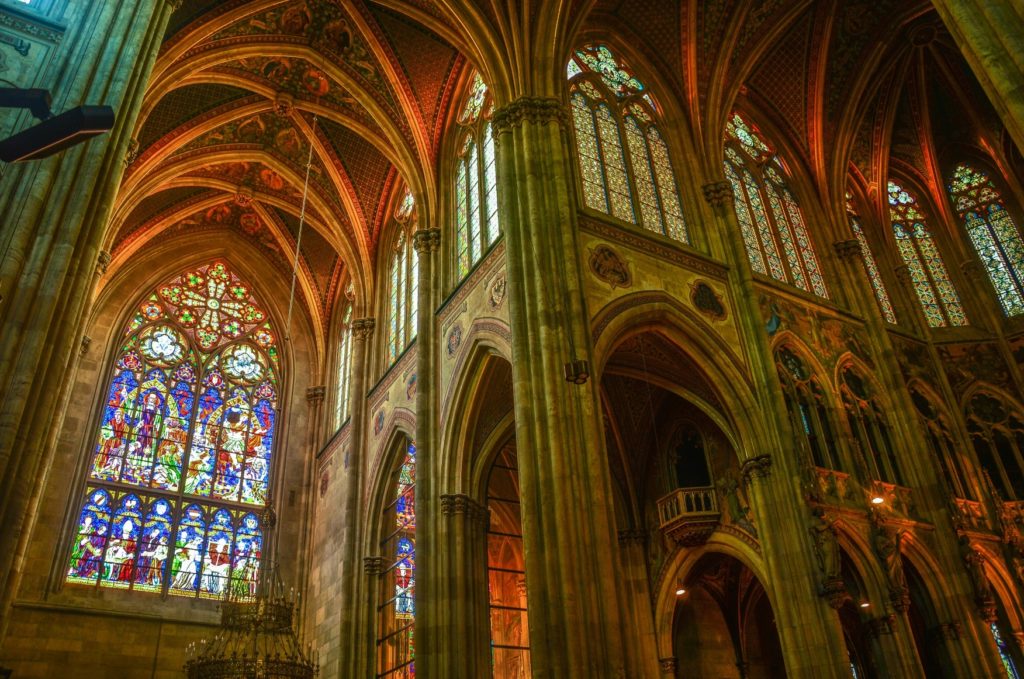Colored glass has origins that date back to ancient Egypt and continued throughout the Middle East. This medium rose to prominence primarily in the Middle Ages in Europe, where these works served to represent pictorially biblical narratives. It is assumed that this was done as a means of communicating this scripture to a largely illiterate population at the time.
In addition to disseminating scripture, the bright colors illuminated by natural sunlight glowed prominently, especially at lofty heights, and created a very powerful effect upon these places of worship, enhancing their sanctity through aesthetics.
In an almost poetic sense, stained glass helped to shed light upon these dark ages.
The effect it produced on worship was so significant and powerful that this tradition continued to endure throughout Europe past medieval times, becoming incorporated into Romanesque, Gothic and Classical architecture.
Thus, stained glass became synonymous with churches and cathedrals.
But in the nineteenth century, certain artists like Luis Comfort Tiffany and Marc Chagall started to use stained glass in a much more contemporary fashion. This gave rise to a revival and new dawn for this medium.


